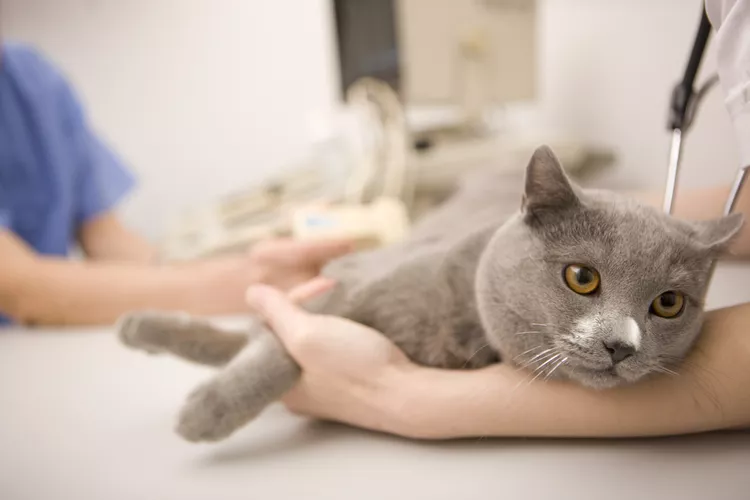Should You Spay a Cat in Heat?

Did your cat go into heat before you had a chance to have her spayed? Perhaps she was an early bloomer and the onset of estrus was a surprise to you. Or, maybe you waited longer than ideal to schedule the surgery. Either way, if you want to avoid an accidental pregnancy, you will need to have your cat spayed soon. Can a cat be spayed while she is in heat? The short answer is yes. However, it is not an ideal situation.
Spaying Your Cat Before Heat
A spay surgery, or ovariohysterectomy, is considered a relatively low-risk, routine, surgery if the cat is not in heat. Ideally, you will have your cat spayed before her first heat to keep things simple.
Vets generally recommend spaying kittens by the age of 6 months. That's because most female kittens will have their first heat cycle between the ages of 6 and 9 months. Though uncommon, some cats will go into heat as early as 4 months of age. Many animal shelters and rescue groups prefer to spay kittens as young as 8 weeks of age. This prevents accidental pregnancies later on. If you are concerned about making sure you have your cat spayed before her first heat, you may want to talk to your vet about doing the surgery early.
Once a cat begins her heat cycle, she can easily become pregnant. Most feline heat cycles last about four to seven days. If she does not mate during this heat cycle, she will probably continue to go into heat again every few weeks.
If your cat does go into heat, you are now faced with a decision. Should you wait to spay your cat after her heat, or should you have her spayed while she is still in heat?
Spaying a Cat in Heat
If your cat is in heat, her instincts and hormones are telling her to mate. Therefore, she will go to great lengths to escape the home and find males to mate with. This is why a cat in heat should be kept securely indoors to avoid an unwanted pregnancy.
Unfortunately, it can be frustrating to live with a cat exhibiting the signs of estrus. Cats in heat tend to vocalize excessively. They may obsessively try to escape their homes. Some will even mark areas of the home with urine.
If you don't think you can deal with this behavior for about a week, then you may ask your vet about having her spayed as soon as possible. Though spaying a cat in heat is not ideal, it can be done. However, there are some disadvantages to this.
When a cat is in heat, the blood vessels that supply the reproductive organs and surrounding tissues become engorged with blood. The tissues may be more prone to tearing. This adds up to a surgery that is more complicated and lengthy than a routine spay. It will also be more expensive because of the extra time and supplies needed. Though the increased risk to the cat is minor, some vets prefer to avoid doing surgery on a cat in heat.
If you have scheduled your cat's spay surgery in advance and find that she has started her first heat right before the surgery, be sure to contact your vet for advice. It may be more practical for you, your cat, and the vet to postpone the surgery.
If you feel the risk of your cat escaping and mating is high, then it may be worth the additional cost, time, and risk to have the spay done while your cat is in still heat. Talk to your veterinarian for advice.
Timing the Spay Surgery
If your cat is in heat and you decide to wait to spay her, then it's important to plan ahead. Remember that cats will continue to go into heat until they mate. This means a new heat cycle could begin just days to weeks after the last one ends. Finding the right window can be tough. Your vet may not be able to accommodate a last-minute surgery. Ask your vet about the best time to schedule the spay. If your cat is showing signs of heat a day or two before the scheduled surgery, be sure to let your vet know as soon as possible.